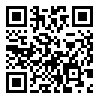Mon, Dec 29, 2025
[Archive]
Volume 15, Issue 2 (Spring 2024)
Caspian J Intern Med 2024, 15(2): 334-339 |
Back to browse issues page
Download citation:
BibTeX | RIS | EndNote | Medlars | ProCite | Reference Manager | RefWorks
Send citation to:



BibTeX | RIS | EndNote | Medlars | ProCite | Reference Manager | RefWorks
Send citation to:
Moeini R, Mohammadi Sagh M, Faramarzi M, Saadat P, Mojahedi M, Gorji N et al . Evaluation of relationship between memory and temperament in 18-28 years old students. Caspian J Intern Med 2024; 15 (2) :334-339
URL: http://caspjim.com/article-1-3789-en.html
URL: http://caspjim.com/article-1-3789-en.html
Reihaneh Moeini 

 , Maliheh Mohammadi Sagh
, Maliheh Mohammadi Sagh 

 , Mahbobeh Faramarzi
, Mahbobeh Faramarzi 

 , Payam Saadat
, Payam Saadat 

 , Morteza Mojahedi
, Morteza Mojahedi 

 , Narjes Gorji
, Narjes Gorji 

 , Alijan Ahmadi Ahangar *
, Alijan Ahmadi Ahangar * 




 , Maliheh Mohammadi Sagh
, Maliheh Mohammadi Sagh 

 , Mahbobeh Faramarzi
, Mahbobeh Faramarzi 

 , Payam Saadat
, Payam Saadat 

 , Morteza Mojahedi
, Morteza Mojahedi 

 , Narjes Gorji
, Narjes Gorji 

 , Alijan Ahmadi Ahangar *
, Alijan Ahmadi Ahangar * 


Mobility Impairment Research Center, Health Research Institute, Clinical Research Development Unit of Rouhani Hospital , Babol University of Medical Sciences, Babol, Iran , ahmadiahangaralijan@yahoo.com
Abstract: (2531 Views)
Background: Mizaj (Temperament) is a concept to express individual differences in Persian medicine and according to this theory, there is a relationship between Mizaj type and the abilities of different body organs. This cross-sectional study aimed to investigate the relationship between the type of Mizaj and the memory score (Quotient).
Methods: The target population was the 18 to 38 years old students of Babol University of Medical Sciences. Mojahedi’s Mizaj questionnaire (MMQ) was used for determining the whole Mizaj. The physical Persian version of Wechsler Memory Scale III (WMS III) was used to assess memory score. The collected data were analyzed by SPSS Version 22 and the chi square (x2) and t-test were run and p- value 0.05 was considered as significant difference.
Results: Forty-two of participants were females and 18 were males. The average age of them was 23.6 (21-27). The average of Memory Quotient (MQ) was 122.1 ± 5.7. The average of MQ in warm Mizaj was 125.46 ± 1.2 and in cold Mizaj was 118.79 ± 6.5. The difference between two groups is statistically significant (p< 0.001). The average of MQ in dry Mizaj was 124.16 ± 2.67 and in wet Mizaj was 118.40 ± 7.64. The difference between two groups is statistically significant (P= 0.005).
Conclusion: The results showed there are significant relationship between memory score and warm/cold Mizaj and dry /wet Mizaj. It means students with warm or dry Mizaj had better memory score than students with cold or wet Mizaj. This relation was also detected between subtypes of memory and Mizaj expect between working memory and dry/wet Mizaj. These results are in accordance with theories in PM which indicate people with warm Mizaj and dry Mizaj have better memory and people with cold Mizaj and wet Mizaj have weaker memory and are more at risk of memory dysfunction.
Methods: The target population was the 18 to 38 years old students of Babol University of Medical Sciences. Mojahedi’s Mizaj questionnaire (MMQ) was used for determining the whole Mizaj. The physical Persian version of Wechsler Memory Scale III (WMS III) was used to assess memory score. The collected data were analyzed by SPSS Version 22 and the chi square (x2) and t-test were run and p- value 0.05 was considered as significant difference.
Results: Forty-two of participants were females and 18 were males. The average age of them was 23.6 (21-27). The average of Memory Quotient (MQ) was 122.1 ± 5.7. The average of MQ in warm Mizaj was 125.46 ± 1.2 and in cold Mizaj was 118.79 ± 6.5. The difference between two groups is statistically significant (p< 0.001). The average of MQ in dry Mizaj was 124.16 ± 2.67 and in wet Mizaj was 118.40 ± 7.64. The difference between two groups is statistically significant (P= 0.005).
Conclusion: The results showed there are significant relationship between memory score and warm/cold Mizaj and dry /wet Mizaj. It means students with warm or dry Mizaj had better memory score than students with cold or wet Mizaj. This relation was also detected between subtypes of memory and Mizaj expect between working memory and dry/wet Mizaj. These results are in accordance with theories in PM which indicate people with warm Mizaj and dry Mizaj have better memory and people with cold Mizaj and wet Mizaj have weaker memory and are more at risk of memory dysfunction.
Keywords: Mizaj, Temperament, Individualized medicine, Wechsler memory scale, Persian medicine.dicine
Policy Brief: Original Article |
Subject:
Neurology
Received: 2022/12/12 | Accepted: 2023/10/17 | Published: 2024/02/24
Received: 2022/12/12 | Accepted: 2023/10/17 | Published: 2024/02/24
Send email to the article author
| Rights and permissions | |
 |
This work is licensed under a Creative Commons Attribution-NonCommercial 4.0 International License. |




